Hallux rigidus
Table of Contents
Introduction
Hallux rigidus, sometimes known as turf toe or stiff big toe (metatarsophalangeal (MTP) joint), is when you have big toe pain. The Big toe (metatarsalphangeal joint) pain could make it hard to walk or even stand.
Often, nonsurgical treatments, known as properly fitting shoes, could help. But if the big toe joint pain is interfering in your life, hallux rigidus surgery could offer a permanent solution.
What is hallux rigidus?
Hallux rigidus define as a stiff big toe— the main symptom of the disorder. Hallux rigidus is a part of degenerative arthritis, a common part of arthritis. It’s sometimes known as big-toe arthritis.
Anatomy of the big toe:
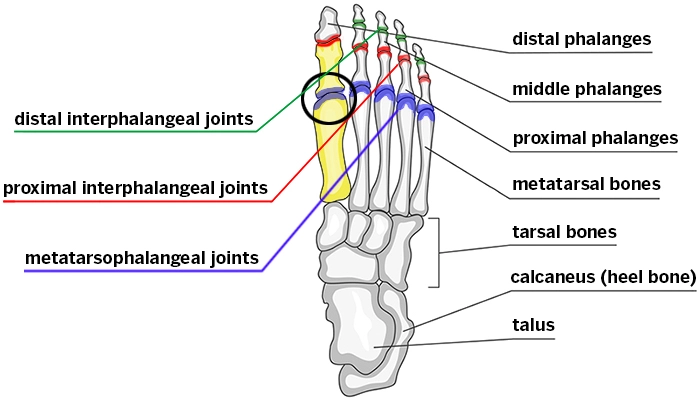
Plantar plate: This thick, fibrous tissue under the Metatarsalphalenhgeal joint prevents the big toe from bending too far (dorsiflexion).
Collateral ligaments: Located on both sides of the big toe, collateral ligaments connect the phalanx bone to the metatarsal and prevent the toe from going too far side-to-side.
Flexor hallucis brevis: This tendon runs under the first metatarsal bone and attaches to the phalanx. It gives strength and stability to the big toe during push-off motions.
Sesamoids: These two small bones are enveloped in the flexor hallucis tendon, and asses it to move more easily. Moreover, the sesamoids give stability to the MTP joint by helping to bear the weight placed on the forefoot.
What causes hallux rigidus?
- For some individuals, there is no apparent cause. Hallux rigidus likely develops because the toe joint experiences much stress when walking. Every step of a person takes place with a force equal to twice your body weight on the toe joint.
- A lot of doctors feel that, in multiple cases, the health begins with damage to the articular cartilage lining the joint, indeed entity as simple as rubbing out the big toe. The injury sets in motion a degenerative course that might be held up for areas before symptoms be that absent from treatment.
- It can be seen Genetically also, mainly from inheriting a particular foot type (like a long first foot bone) or typing walking pattern may lead to stress on big toe joints.
- Anatomical differences could include a slight change in the shape of the end of the bone (e.g., flatter than normal or oddly- shaped), or contracted or tight fascia( connective tissue) under the base, which increases pressure on the MTP joint. These minor abnormalities may increase the stress that’s placed on the joint when you walk. Over multiple times, this enhanced stress might add up to degenerative arthritis of the joint.
- overuse of the big toe worsens the condition.
- It is also seen in osteoarthritis conditions.
- Some inflammatory conditions such as arthritis and gout.
- It is also worn and torn in the metatarsal phalangeal joint.
What are the symptoms of hallux rigidus?
- The main symptom is a pain in your big toe, especially when you push off as you walk. If the condition gets worse, you might notice: Your toe’s motion decreases over time so walking or even standing is painful.
- Pain and stiffness worsen during cold, damp weather.
- Your toe joint becomes swollen and inflamed.
- A bump, like a bunion or a callus, develops on the top of the foot.
- Wearing shoes might be uncomfortable. Your toe’s motion decreases over time so walking or even standing is painful.
- pain and stiffness in the patient’s big toe during use
- swelling and inflammation around the joint
- patients complain of pain and stiffness that worsens during cold, damp weather
- As the condition progresses, you may notice:
- pain even during rest
- A hard bump forms at the top of your foot
- inability to bend your big toe
- limping
How is hallux rigidus diagnosed?
Your physiotherapist could diagnose hallux rigidus by testing your toe joint’s range of motion. Your physiotherapist might check how far you could bend the toe up and down. An X-ray could show any bone abnormalities or bone spur development.
If you have symptoms of hallux rigidus, your therapist would start by examining your foot. They might move your big toe around a bit to rule out any other potential causes of your symptoms. Based on what they see during the exam, your therapist may order an X-ray of the patient’s foot or toe. This would allow them to see any damage to the joint in your big toe.
the clinical classification which has become standard, and in fact correlates quite well with the grading:
- Grade 1: minimal to moderate osteophytes formation but good joint space preservation in hallux rigidus
- Grade 2: moderate osteophyte formation with joint space narrowing and subchondral sclerosis disease
- Grade 3: mark osteophyte formation and loss of the visible joint space, with or without subchondral cyst formation
- Grade 0:
- Dorsiflexion 40-60°
- Normal radiography
- No pain
- Grade 1
- Dorsiflexion 30-40°
- Dorsal osteophytes
- Minimal/ no other joint changes
- Grade 2
- Dorsiflexion 10-30°
- Mild to moderate joint narrowing or sclerosis
- Osteophytes
- Grade 3
- Dorsiflexion less than 10°
- Severe radiographic changes
- Constant moderate to severe pain in extremities
- Grade 4
- Stiff joints
- Chronic changes with loose bodies and osteochondritis disease.
Treatment of Hallux Rigidus
Medical treatment for hallux rigidus:
To relieve pain, your doctor might recommend comfortable shoes: Wear shoes that have plenty of room for your toes. You might find that shoes with stiff soles relieve pain. Avoid wearing high heels. Restricted to movement: Place pads in the patient’s shoe to limit the movement of your big toe.
Avoid activities that stress your toe joint, such as jogging, walking, and running.
Pain reliever medicines: Nonsteroidal anti-inflammatory medications (NSAIDs), such as ibuprofen, could relieve pain and reduce joint swelling.
Contrast bath: Try a contrast bath, switching between hot and cold water to relieve inflammation around the toe joint. Place your foot in hot water for 20 to 30 seconds, then right away in cold water for 20 to 30 seconds.
injections: Corticosteroid injections could help relieve pain.
Physiotherapy treatment for hallux rigidus:
The main goal of Physiotherapy treatment is to Reduce big toe joint pain, Reduce joint swelling, improve the range of motion, and Increase the strength of muscles around the toe muscle.
Physiotherapy treatment also helps to improve the mobility of the joint, and ligament and motivates the patient’s confidence. Restore the patient’s overall function and mobility.
The physiotherapist examines you and according to the symptoms starts the treatment.
Electrotherapy
Ultrasound
Ultrasound has been used for pain relief.
Increases blood rotation and mobility.
To reduce lump and pain.
Cryotherapy
Inflammation and lump could be reduced by applying cryotherapy in the form of ice packs, and cold water effect on the affected part. Patient can use the cold pack for 10 to 15 minutes.
T.E.N.S
Transcutaneous electrical nerve stimulation (TENS) might be suitable to assess and reduce toe pain and muscle spasms.
Exercise for hallux rigidus:
Toe accretion, point, and curl
- This exercise has three stages and will help strengthen all muscles surrounding the toe joint.
- To do this exercise: Sit up straight in a chair, with your feet flat on the floor. Keeping your toes on the floor, raise your heels. Stop when only the balls of the feet remain on the ground. Hold this position for 5 to 10 seconds before lowering the heels. For the second stage, raise the heels and point the toes so that only the tips of the big and second toes are touching the ground. Hold for 5 to 10 seconds before lowering. For the third stage, raise the heels and curl the toes inward so that only the tips of the toes are touching the ground. Hold this position for 5 to 10 seconds. Build flexibility and mobility by repeating each stage 5 to 10 times.
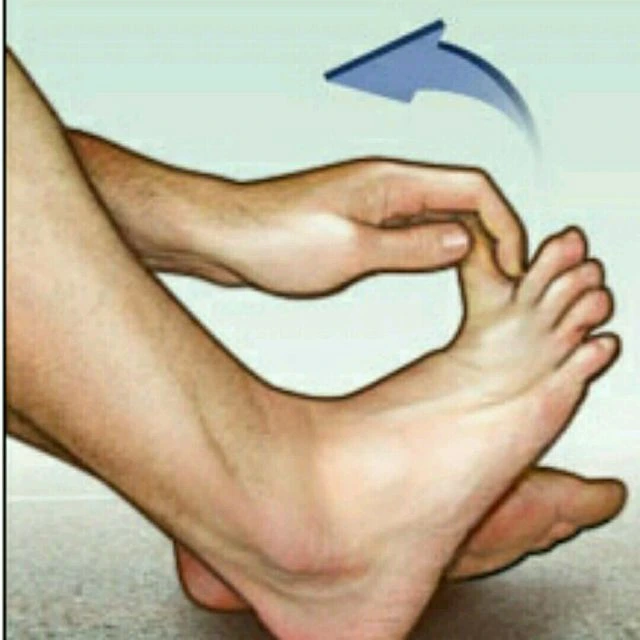
Big toe stretch
- Keeping a wide range of movement in the big toe is essential. The following exercise also has 3 stages and is designed to stretch and relieve pain in the toes from wearing tight shoes.
Do this exercise straight in a chair, or on the floor. Bring the left base to rest on the right thigh. gently stretch the big toe up, down, and to the side. Keep the big toe in each position for 5 to 10 seconds. Repeat this 10 times before switching to the other bottom. Do exercises for strength
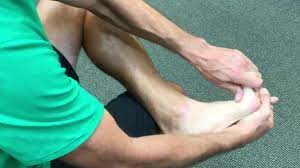
The following exercises can help enhance the strength of the big toe.
Toe splay
- Doing the toe splay exercise could improve control over the toe muscles. A patient could do it on both feet at once or on alternate feet, depending on which they find more comfortable to do this exercise.
- To do this exercise: Sit in a straight-backed chair, with the feet gently resting on the ground. Spread the toes apart as far as possible without straining. Hold this position for 5 to 10 seconds. Repeat this movement 10 to 15 times. Once a person has built up their strength, they could try looping a rubber band around the toes. This would provide resistance and make the exercise more challenging.
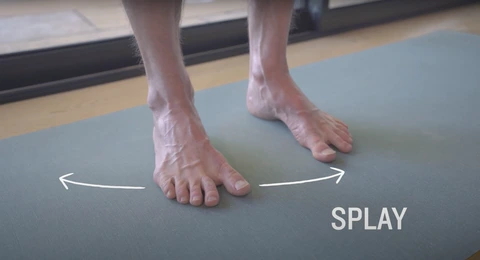
Toe ringlets
- Doing toe ringlets builds up the flexor muscles of the toes, perfecting overall strength. To do this exercise patient is in a standing or in a sitting position, with the bases flat on the floor. Take a small scarf on the bottom in front of the body, with the short side looking at the feet. Try to grasp the scarf between the toes and pull it toward yourself. Repeat this exercise five times to ten times before switching to the other foot. To make this exercise more correct.

Marble pickup
- Doing the marble pickup can increase strength in the muscles on the undersides of the feet and toes.
- To do this exercise: Sit up straight in a chair, with your feet flat on the floor. Place any empty bowl and a bowl of 20 marbles on the floor in front of the feet. Using only the toes of one foot, pick up each marble and place it in the empty bowl. Repeat this exercise using another foot.

Beach walking
- Walking barefoot on the beach is a great way to stretch and strengthen the toe muscles. This is good exercise in general because the beach’s soft texture makes walking further physically demanding.
- To do this exercise, walk on the sand, a desert, a volleyball court, or any other position to withstand Remove the shoes and socks. Walk for as long as possible. Try adding the distance over time to avoid overexercising.
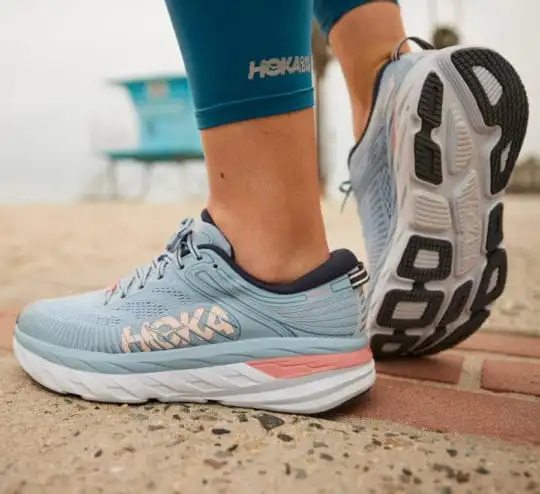
Exercises for pain
The following exercises could be helpful for pain relief.
Toe extension
- The toe extension is useful in precluding or treating plantar fasciitis, which is a condition that causes pain in the heel when walking and difficulty raising the toes. Do this exercise up straight, with the bases flat on the floor. Place the left bottom on the right thigh. Pull the toes over toward the ankle. There should be a stretching feeling along the bottom and heel cord. Hold for 10 to 20 seconds. stretching will help ease pressure and pain. Repeat this exercise 10 times on each foot.
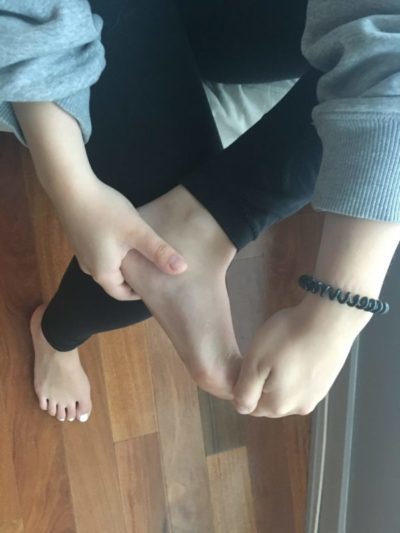
Golf ball roll
- Rolling a golf ball under the bottom can help relieve discomfort in the bow and ease pain associated with hallux rigidus.
- To do this exercise straight in with the bases flat on the floor. Place a golf ball — or another small, hard ball — on the bottom next to the feet. Take one ball and move it around, pressing down as hard as is comfortable. The ball should be at the bottom of the foot. Continue for 15, also repeat using the other foot. A firm water bottle can be a soothing volition if no suitable balls are available.

Achilles stretch
- The Achilles tendon is a connecting the heel to the shin muscles. It can strain, but keeping it strong may help with bottom, ankle, or leg pain. To do this exercise – face a wall and raise the arms so that the triumphs of the hands are resting flat against the wall. Move one bottom back, keeping the knee straight. also, bend the knee of the contrary leg. Keep both heels flat on the floor. Push the hips forward until there’s a stretching feeling in the Achilles tendon and shin muscles. Hold for 30 seconds before switching sides. reprise three times on each side. For a slightly different stretch, bend the reverse knee and push the hips forward.

Sometimes, conservative measures aren’t enough. You may still have pain and stiffness. If the pain interferes With your living life, surgery can help. Surgical procedures for hallux rigidus include:
Surgical treatment for hallux rigidus:
- Cheilectomy(kie-LEK-to-me): Shaving the bone spur could help relieve pain and preserve joint motion. A cheilectomy allows more for the toe to bend. This type of surgery is known to treat mild to moderate damage in the toe. It involves shaving any bone spurs. A cheilectomy might also be performed in combination with another procedure called an osteotomy. This cuts the bone to change the position of your big toe and relieve pressure on top of the joint in the foot.
- Osteotomy: Cutting the bone could realign or shorten the big toe.
- Interpositional arthroplasty: a doctor might recommend this joint resurfacing procedure for younger patients. Surgeons remove some of the damaged bone. They place a “spacer” of donor tissue between the joint ends to relieve pain in the toe joint. This procedure is primarily to treat moderate to severe hallux rigidus. It’s a joint-sparing alternative to joint fusion or replacement in the toe. It is also known as joint resurfacing. The procedure consists of removing some damaged bone and placing a spacer between the bones to minimize contact. The spacer might be made from tissue from your foot, donor tissue, or synthetic cartilage.
- Arthrodesis: For chronic cases, this joint fusion procedure can provide long-lasting pain relief. The surgeon removes the damaged cartilage and joins the two bones together. This surgery offers a permanent solution but might restrict big toe movement in early life. This type of surgery is also called joint fusion. It is used to treat advanced hallux rigidus disease involving severe joint damage in the toe. in the surgery, the damaged cartilage is removed from the toe. The two bones are fixed together with screws in the big toe. After some time, the bones fuse together. This type of surgery reduces pain, but it also permanently restricts the movement of the patient’s big toe.
FAQ
Advanced hallux rigidus could beget Pain, indeed during rest. Pain worsens with the use of the big toe, known as jumping. Difficulty in wearing shoes because of bone spurs.
Educated Orthopedic Specialists or physiotherapists have the grit you need to treat hallux rigidus and all bottom and ankle bone conditions.
Hallux rigidus only gets worse over time. The before it’s treated the easier it’s to exclude your pain and assess whether you avoid surgery. frequently rightly specified bottom orthotics will exclude pain and mokes reduce further damage.
Hallux rigidus is actually a form of degenerative arthritis. This complaint could be veritably disquieting and indeed disabling since we use the big toe whenever we walk, design down, climb up or indeed stand.
Hallux rigidus has a degenerative complaint of the first metatarsophalangeal( MTP) joint. It’s the most common form of arthritis in the bottom, affecting 1 in 40 people over the age of 50 with a 21 partiality for ladies.


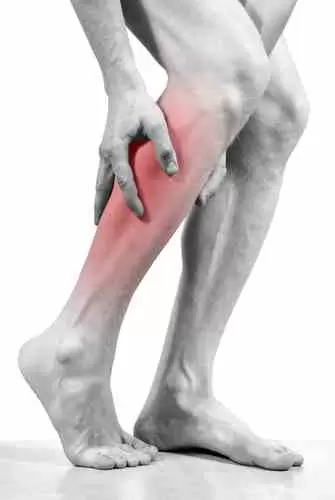
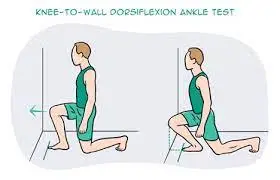
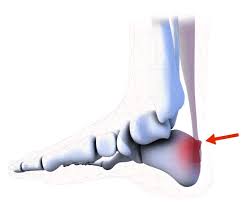
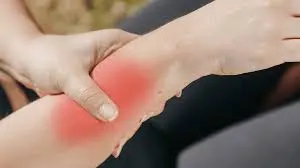

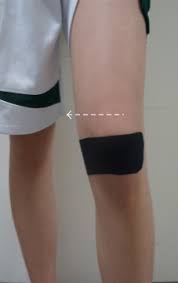
3 Comments